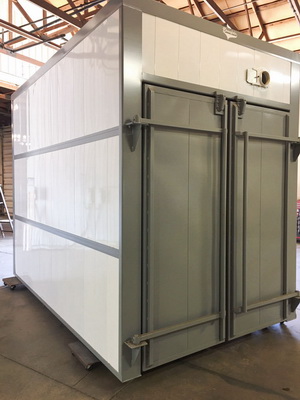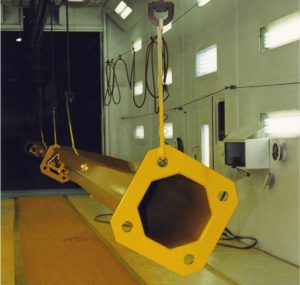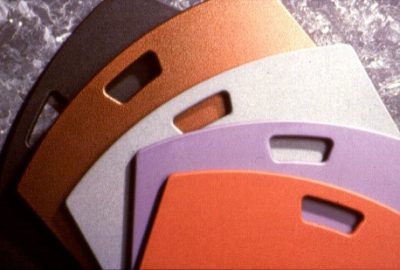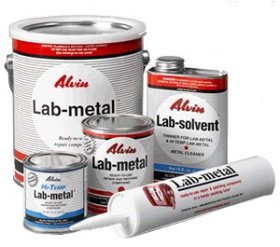Powder coating oven design, operation and maintenance is discuss in detail in the post.
A properly designed and maintained powder coating oven is absolutely necessary for a quality finished product.
Powder materials are thermally reactive by design, meaning that heat will change them. The heat required to transform the powder material from its powder form to a solid thermosetting finish comes from an oven. There are several types of ovens to choose from. Natural Gas Convection heat, infrared, and electric heat are the most popular.
Without getting into the direct pros and cons of each curing system, I would like to discuss several of the important factors regarding the heating system that directly effect the quality of the finish. 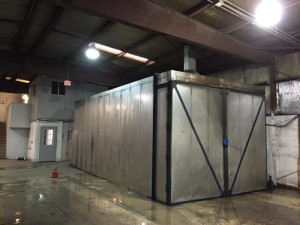
1. Proper air flow within in the oven is very important. The direction and the velocity of the air should be taken into consideration when designing and/or adjusting the oven. The recirculating blower size must be calculated correctly to determine the proper flow and direction of air. Contact your oven manufacturer if you think that changes need to be made.
2. Even heat distribution is needed to insure that the parts will receive the proper amount of temperature for the correct time. By changing the distance in the openings between the louvres inside the ovens, on a gas fired convection heat oven, for example, you can change the atmospheric temperature and redirect the air flow in certain areas within the oven.
3. Clean oven intake or burner air is essential to prevent contamination from entering the heated air space within the oven walls. I have helped a number of companies correct contamination problems by instructing them to change or add a filtration device to the oven air intake system. Contaminants that enter the oven will be carried rapidly to the parts by the recirculating blowers and can eventually be embedded into the finish before it completes the cure cycle.
4. Total heating time is the sum of the time that it takes for the parts to reach the predetermined cure temperature plus the time that is required for the part to remain at that temperature to complete full cure. To accurately determine the total oven time it is helpful to send a temperature recorder into the oven with a probe attached to the parts surface and another that will measure the oven atmospheric temperature. Most powder sales representatives will be happy to help you run such a test. Once the total oven time is determined for the given mass, or part, some type of timing system must be implemented to insure that the parts are exposed to the necessary heat for the proper time. Conveyorized ovens use line speeds to establish the total oven duration. Batch finishers will use some sort of timer with a bell or flashing light to remind the coating applicators that the parts are to be removed from the oven.
5. Housekeeping is one subject that I cannot write enough about and for good cause. If contamination is abundant on the shop floor of any plant that I visit, I will bet good money that the inside of the oven, spray booth, collector system, powder hopper, etc. will also contain the same contaminants. Shop air flow is constantly moving and changing. Lift trucks moving about, doors opening and closing, fan and air conditioners blowing, compressed air being used for part blow off and many more factors involving air movement will cause contaminants such as dirt, lint, hair, and trash to be introduced into the finishing system. The powder coating application system is very dependent on clean dry air. Therefore, good housekeeping should not be something that you have your line workers do when you’re not busy, it should be apart of the total quality commitment in any finishing shop, FULL TIME!
6. Record keeping of maintenance tasks such as, oven calibration, filter changes, motor repair or replacement, and oven adjustments should always be logged in a maintenance book. This maintenance log book will allow the systems manager to spot trends and help to insure that the system is being closely watched for changes that will effect productivity and quality. I like to see an oven that has a temperature recording device attached to it as an option. In fact, I have had customers request proof of the oven temperature during the run of their parts. Contact your oven manufacturer and ask about the options available.
7. Ovens require little maintenance as compared to the pretreatment system for example. However, all equipment should be maintained on a regular basis to prevent devastating unplanned down time. Schedule clean up and inspection time for ovens as with all equipment to insure that they are operating at peak efficiencies.
8. Calibration and temperature testing should be done on a regular basis by your equipment supplier to insure that all is well. Like a physical examination by a doctor sometimes we need a second opinion regarding the health and condition of our system.
- Air Flow
- Even Heat Distribution
- Clean Oven or Burner Intake Air
- Total Heating Time
- Housekeeping
- Record keeping
- Maintenance
- Calibration and Temperature Testing
The above can be used as a check list for developing a regular maintenance inspection on your heating system.
The following information on powder coating oven design and operation is from Powder Coaters Manual.
You can order your own copy of the 6th edition of the manual from CCAI here.
General Powder Coat Oven Design & Operation
There are some general rules that govern standard good practice in
the design and operation of process ovens. Observation of these rules
will help a powder coater acquire and maintain a dependable oven.
Oven Cleaning
Oven maintenance is a critical issue in the design. It will be necessary
to clean the inside of the oven, so you must have accessibility to the
duct, inside and outside and the surfaces should be smooth so that
they can be washed or vacuumed. Oven interiors should be cleaned
once a week to prevent an accumulation of dirt from building up.
Safety
Explosion relief panels should approach a vent ratio of 1 square foot
for every 15 cubic feet of oven volume. They should be installed in the
oven roof or similar non-personnel area.
Oven burners are equipped with safety devices to prevent any problem
associated with the gas. These safety devices should be tested
twice a year to be sure that they are in proper working condition.
Oven exhaust must be suitably sized to remove the gases that are a
natural by-product of the cure process.
Training, Maintenance, and Inspection
Train operators in the proper operation of the oven or dryer, and in
the specific functions of the various safety controls. Operating instructions
should be posted or kept available for ready reference.
Automatic safety controls furnish only partial protection against fire
and explosion. The operators must carry out the vital precautions.
Maintain all equipment in good condition.
Safety controls require regular maintenance in accordance with the
manufacturer’s instructions, and should be inspected and tested periodically.
Failure to do this may result not only in fire or explosion
damage and personnel injury, but contribute to accidental shutdowns
and loss of production.
Shutoff valves, interlocks, and other safety controls may malfunction
without the operator’s knowledge, unless the faulty controls cause
nuisance shutdowns. Operators concerned with production may even
bypass a faulty safety control without reporting the trouble.
Inspect and test safety controls periodically. Personnel who are familiar
with the equipment and specific functions of the various controls
should make the tests. It is usually better to have maintenance personnel
rather than the regular oven operators, make inspections and tests.
Suggested Inspection Schedule
Weekly:
1. Flame failure detection system.
2. Ignitor and burner operation.
3. Combustible gas analysis and automatic interlocks.
Monthly:
1. Fuel safety shutoff valve(s) for leakage.
2. Fan and airflow interlocks.
3. Time delay switches.
4. Conveyor interlocks.
5. High temperature limit switch.
6. Door and damper limit switches.
7. Explosion venting latches.
8. For oil: (a) Fuel pressure and temperature interlocks.
(b) Atomizing media interlocks.
For gas: (a) Gas cleaner and drip leg.
(b) High and low fuel pressure interlocks.
Semiannually or annually, (as required):
1. Ignition and burner components.
2. Combustion air supply system.
3. Flame failure system components.
4. Piping, wiring, and connections of all interlocks and shutoff valves.
5. Combustion control system.
6. Calibration of indication and recording instruments.
Related Resources
- What Size Oven Do Your Need?
- Industrial Cure Ovens
- Powder Coaters Corner -How to Powder Coat Info
- Powder Coating Industry Research
- Contact
Powder Coating Oven Design, Operation and Maintenance



